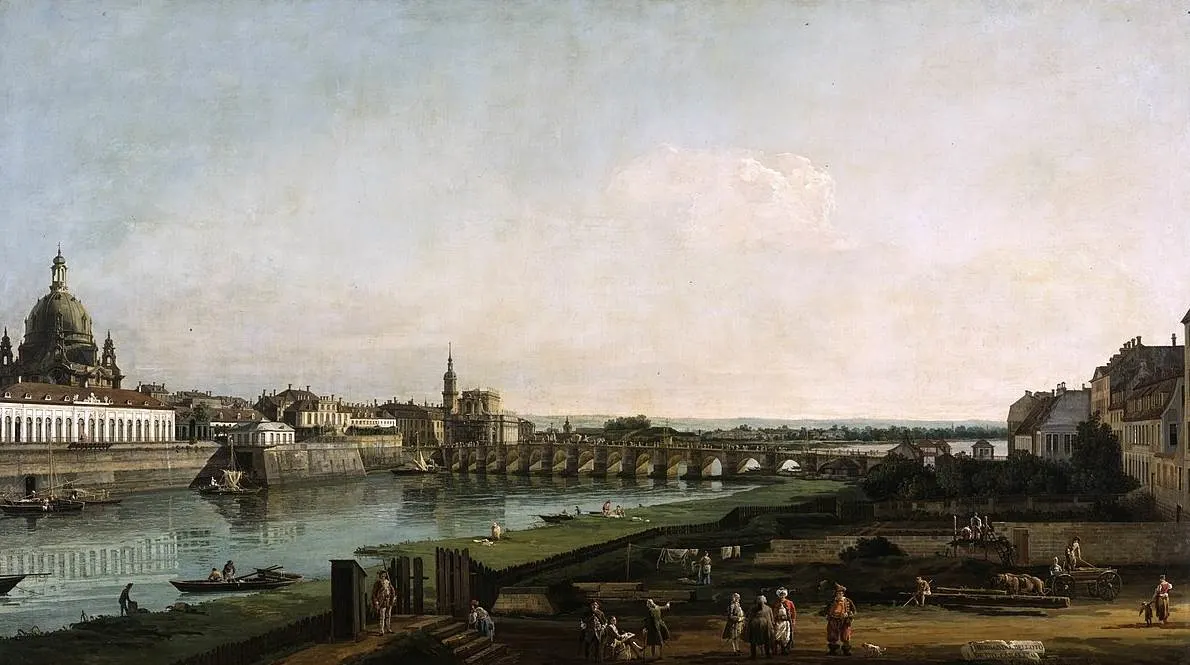If you enjoy the paintings of artists who lived between the 15th and 18th centuries, then there are few museums that house a better collection than this museum in Dresden.
The Gemäldegalerie Alte Meister or “Old Masters Picture Gallery” is located in the Semper Gallery, a Neoclassical building constructed in the 19th century as part of the Zwinger palace complex.
The museum houses the collection of the Electors of Saxony, especially Augustus II (1670-1733) and his son Frederick Augustus II (1696-1763).
Augustus II was the man who initiated the construction of the Zwinger, a fascinating example of Baroque architecture in Germany and the most famous building in Dresden.
The museum opened its doors in the newly constructed Semper Gallery, named after architect Gottfried Semper, in 1855 as the “Neues Königliches Museum” or “New Royal Museum.”
Although it only has a collection size of approximately 750 paintings, it houses some of the most important works in European history.
Below, you’ll find our list of the most famous paintings at the Gemäldegalerie Alte Meister in Dresden.
1. Sistine Madonna – Raphael
- Date created: 1513-1514
- Dimensions: 265 × 196 centimeters (104 × 77 inches)
The Sistine Madonna or “Madonna di San Sisto” is not only one of the most famous paintings at the Gemäldegalerie Alte Meister in Dresden, but it’s also one of the best works in the oeuvre of Raphael. The Renaissance master completed this when he was working for Pope Julius II in Rome and it was intended to hang at the San Sisto Church in Piacenza.
Rafaello Sanzio da Urbino (1483-1520) completed many Madonna paintings but this one is considered to be one of his final ones. It’s one of the many paintings that were purchased by Augustus II in the 18th century and this is how it ended up at his palace in Dresden.

2. Dresden Triptych – Jan van Eyck
- Date created: 1437
- Dimensions: 33 x 27.5 centimeters (12.99 x 10.82 inches)

The Dresden Triptych is the name given to a small hinged triptych painting by Jan van Eyck, the Early Netherlandish master who revolutionized oil painting in the first half of the 15th century. The work is barely the size of a sheet of paper but features an incredible level of detail, the trademark of Jan van Eyck (1390-1441).
This delicate little painting features 5 separate works, 3 inner panels, and 2 outer panels that feature grisailles depicting of sculptures of Archangels Gabriel and Mary. The work was completed in the late-1430s at the height of the artist’s career and it’s the only extant triptych that is positively attributed to van Eyck.
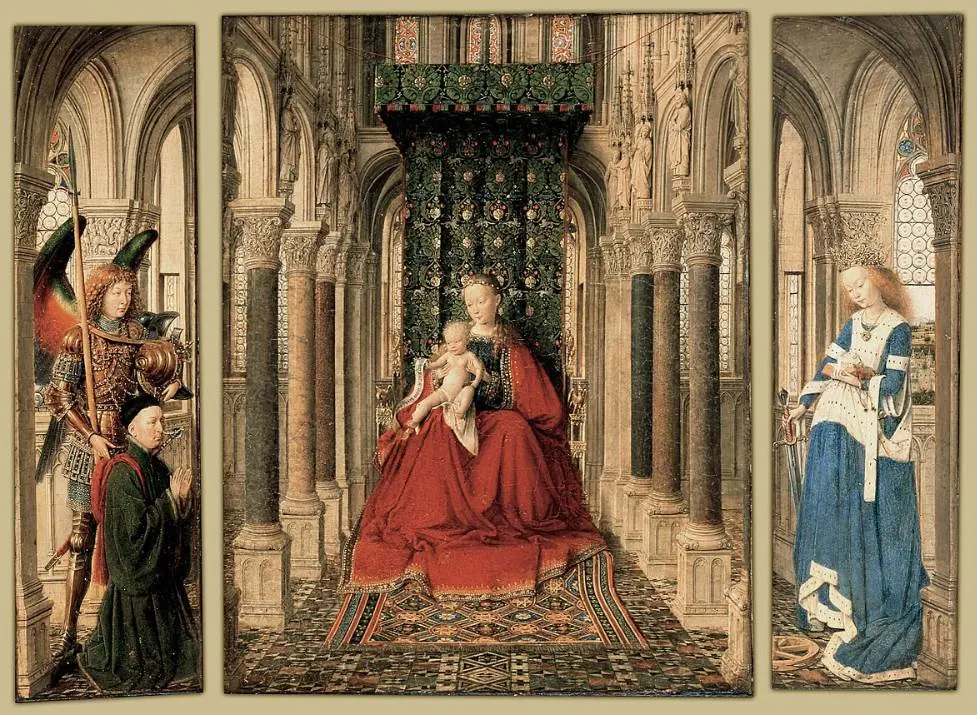
3. The Procuress – Johannes Vermeer
- Date created: 1656
- Dimensions: 143 × 130 centimeters (56 × 51 inches)
The Procuress is a remarkable painting by Johannes Vermeer (1632-1675) for multiple reasons. It was completed when the Dutch artist was only 24 years old and it’s believed to be the first genre painting that he produced. These works were highly popular during the Dutch Golden Age in the 17th century.
It’s only one of three paintings that he actually signed and dated and the figure on the left wearing a black hat has been identified as a self-portrait of the artist. The scene is believed to depict a procuress and her clients, possibly inside a brothel.
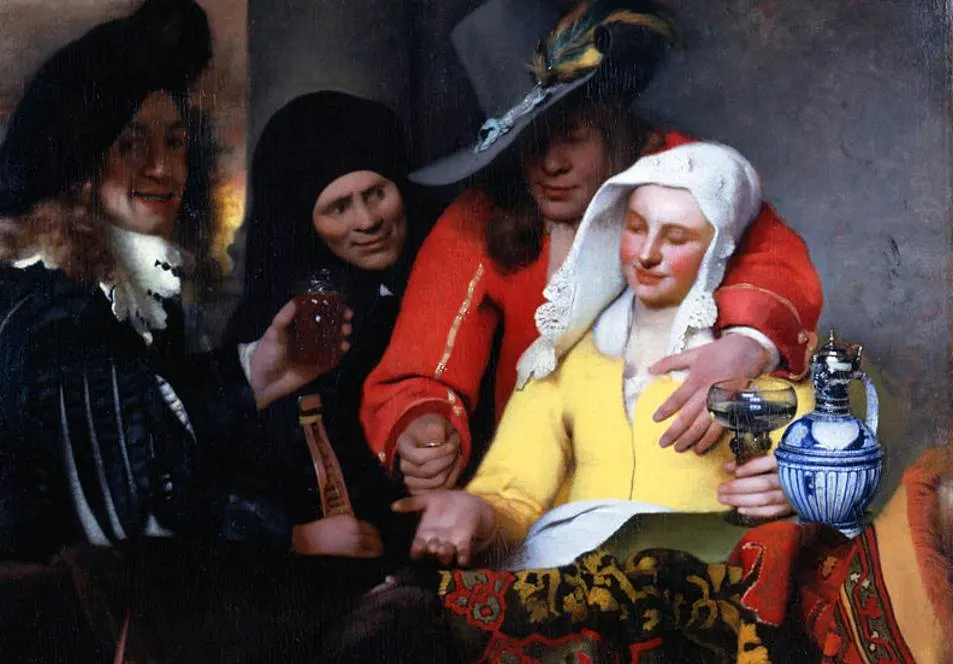
4. Nativity – Antonio da Correggio
- Date created: 1529-1530
- Dimensions: 256.5 × 188 centimeters (101 × 74 inches)
Nativity is also known as “The Holy Night” and “The Adoration of the Shepherds” and is a fascinating work by Renaissance artist Antonio da Correggio (1489-1534). He grew up during the High Renaissance and his art was a precursor to art movements that developed in the following centuries.
This painting includes some of the elements that can be found in Baroque paintings. The dramatic features such as the surprised faces of the spectators and the angels floating above the scene resemble the works of Baroque artists. The use of Chiaroscuro resembles the paintings of Caravaggio several decades later.
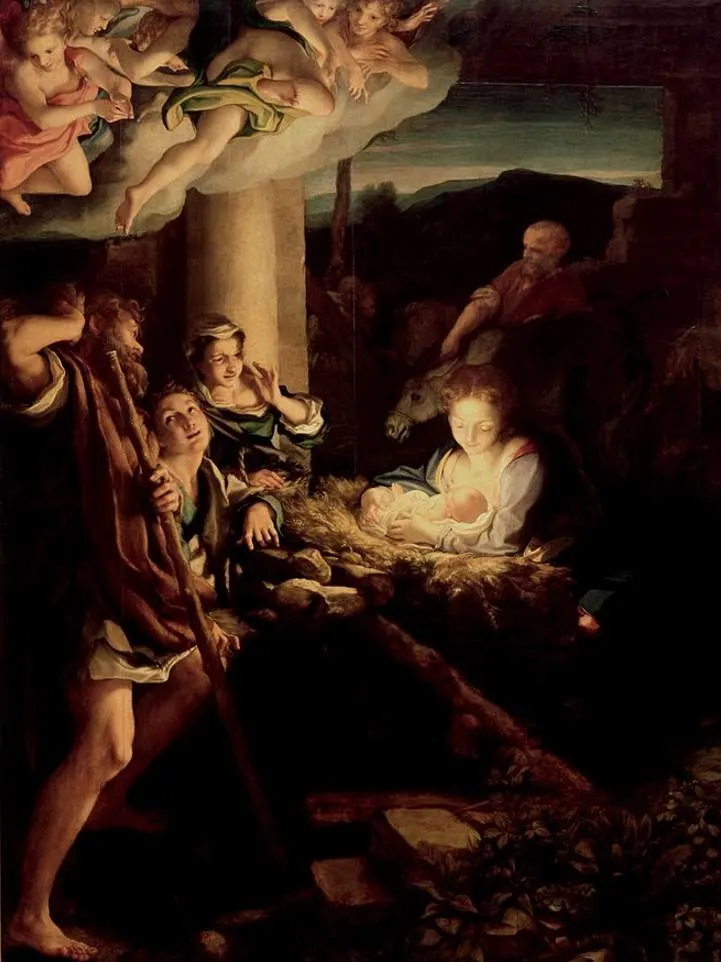
5. Netherlandish Proverbs – Pieter Bruegel the Elder
- Date created: 1559
- Dimensions: 117 × 163 centimeters (46 × 64 inches)
Netherlandish Proverbs is one of the many ambiguous paintings by Pieter Bruegel the Elder, one of the most renowned Flemish artists of the 16th century. The painting is also known as “Flemish Proverbs,” “The Blue Cloak,” or “The Topsy Turvy World,” and depicts allegories of popular Flemish proverbs.
like most of the works by Pieter Bruegel the Elder (1525-1569), the painting has a deeper meaning. Instead of merely depicting a catalog featuring proverbs, the artist aimed to depict the foolishness of humanity. In that sense, it resembles his famous Children’s Games which is part of the collection of the Kunsthistorishes Museum in Vienna.
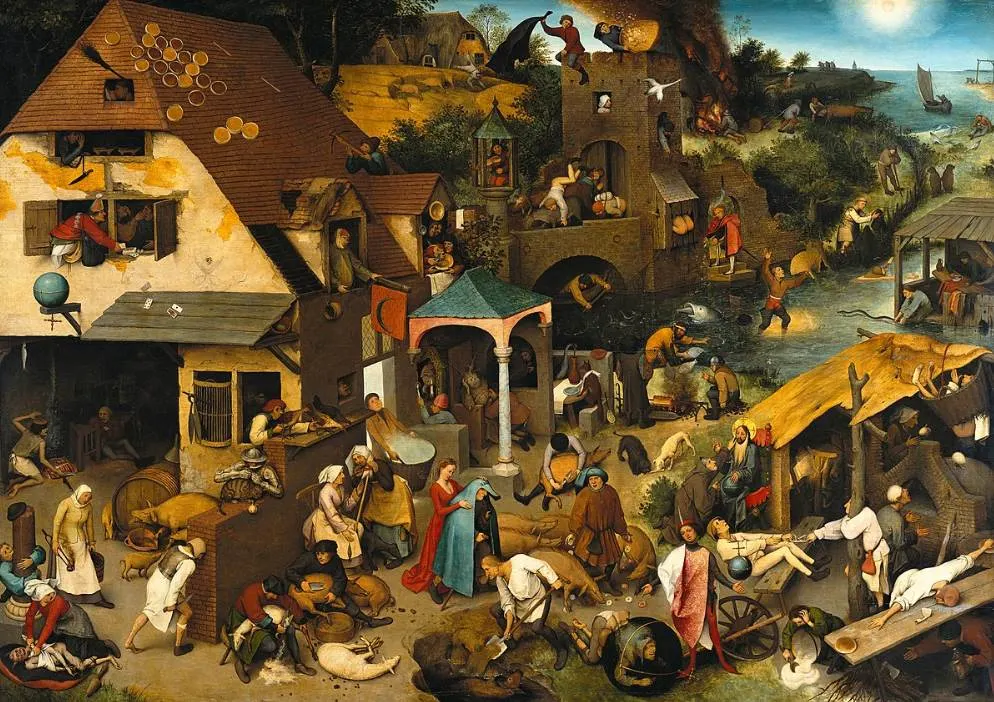
6. The Prodigal Son in the Brothel – Rembrandt van Rijn
- Date created: 1637
- Dimensions: 161 × 131 centimeters (63 × 52 inches)
The Prodigal Son in the Brothel is a painting by Rembrandt that is also known as “The Prodigal Son in the Tavern” or “Rembrandt and Saskia in the parable of the prodigal son.” As the latter title suggests, it depicts Rembrandt van Rijn (1606-1669) himself and his wife Saskia van Uylenburgh.
The Parable of the Prodigal Son was a very popular subject in the Dutch Republic in the 17th century. Rembrandt painted a second version of the work titled “The Return of the Prodigal Son” over 3 decades later in 1669, the year that the Dutch master passed away.

7. Girl Reading a Letter at an Open Window – Johannes Vermeer
- Date created: 1657-1659
- Dimensions: 83 × 64.5 centimeters (33 × 25.4 inches)
Girl Reading a Letter at an Open Window is another amazing painting by Johannes Vermeer and one of his trademark works. The painting depicts a scene that takes place in ne of the rooms of his own house in Delft, the city where he lived. The light source coming from the left allowed him to make his excellent use of light and shadow shine.
It’s one of the many works in the oeuvre of Vermeer that was only credited to him at a later time. It was long believed to be a painting by Rembrandt or Pieter van Hooch. Vermeer’s paintings were “rediscovered” in the 19th century and this remarkable work was properly attributed to him in 1880.
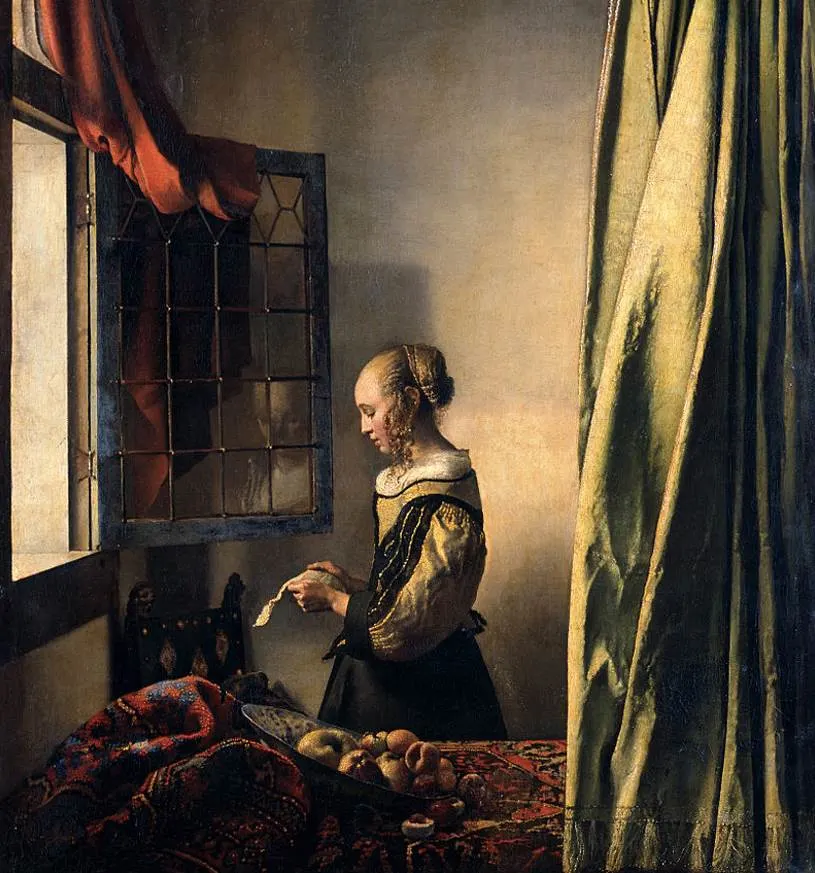
8. Sleeping Venus – Giorgione
- Date created: 1510
- Dimensions: 108.5 × 175 centimeters (42.7 × 69 inches)
Sleeping Venus is also known as the “Dresden Venus” because of the fact that it’s part of the collection of the Gemäldegalerie Alte Meister in the city. It’s certain that the painting was started by Giorgione (1477-1510), a highly influential Italian artist who has always been somewhat of an enigma.
Tiziano Vecelli (1488-1576) almost certainly completed the work, although it remains uncertain how much he actually painted himself. What we do know is that it was highly influential as it inspired artists many centuries later. Titian also painted his version titled “Venus of Urbino” in 1534.
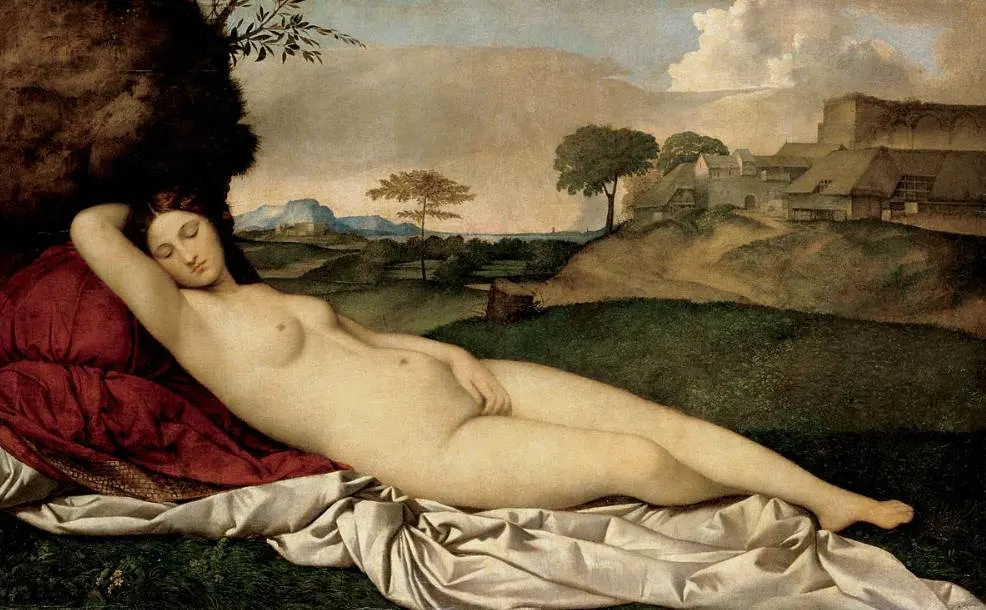
9. The Tribute Money – Titian
- Date created: 1516
- Dimensions: 75 × 56 centimeters (30 × 22 inches)
The Tribute Money is a painting by Titian that depicts a popular story from one of the gospels. Titian was most probably (his exact date of birth is unknown) only in his twenties when he completed this work but the sheer talent of the artist can clearly be seen in this work.
It depicts the moment that Jesus Christ is given a coin but replies “Render unto Caesar the things that are Caesar’s and unto God the things that are God’s.” It’s believed to be the first time that this story was depicted in art history and was only painted a few times afterward. Titian painted a later work that was completed in 1568 and which is part of the collection of the National Gallery in London.

10. Dresden From the Right Bank of the Elbe – Bernardo Bellotto
- Date created: 1747
- Dimensions: 132 × 236 centimeters (52 × 93 inches)
Dresden From the Right Bank of the Elbe is a painting by Bernardo Bellotto (1721-1780), an Italian artist who became famous for his wonderful depictions of European cities. He was the nephew of the Venetian master Giovanni Antonio Canal (1697-1767) or “Canaletto” and his pupil as well.
The painting depicts several important landmarks in the city of Dresden, including the Dresden Frauenkirche, the Dresden Cathedral, and the Augustus Bridge. It was completed shortly after the Zwinger was completed which makes it one of the most intriguing paintings in the collection of the Gemäldegalerie Alte Meister.
